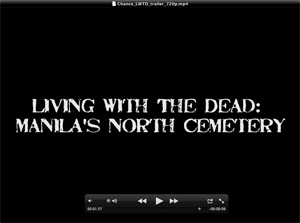|
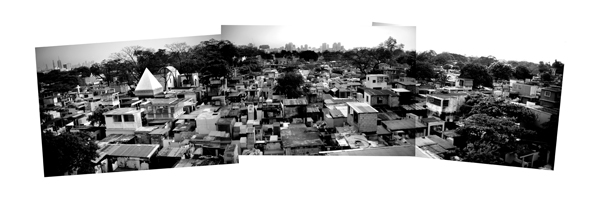
In contrast to cemeteries in the west, the North Cemetery is a busy and vibrant place. The vast and complex network of streets and alleys is tightly lined by tens of thousands of mausoleums and tombs—many of which are inhabited. At 133 acres, the area easily consumes eight football fields. Within most of this area single tombs are cramped in such close proximity that residents and visitors have to clamber over the graves to get around.
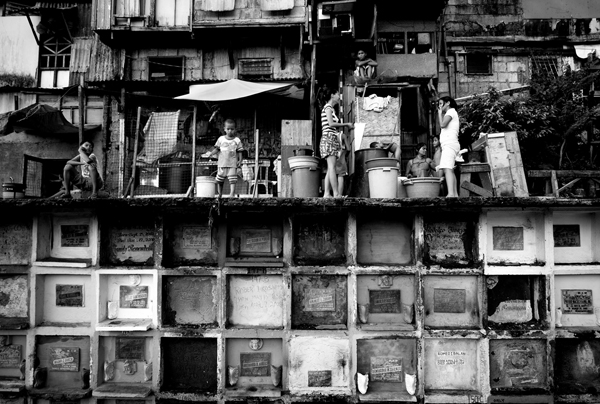
Like any community there are 'classes' of people living here who enjoy more or less luxury, depending on their relative wealth. The most populated area of the grounds is the north wall, which is home to more than 100 families.
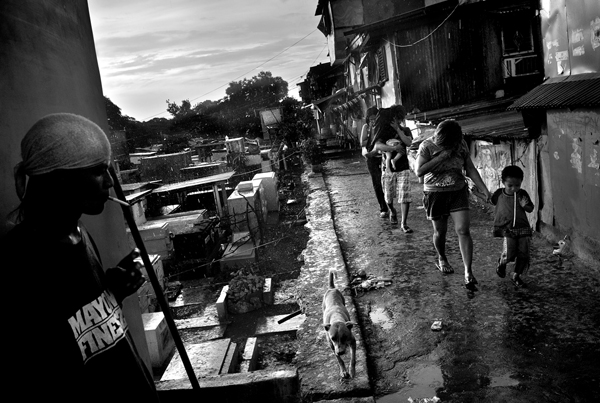
Many of the residents who have built their homes along the north wall of the cemetery, offer a thoroughfare for visitors and other residents to enter and exit the site rather than use the main south gate 1.5 km away. They will normally charge two pesos to do so.
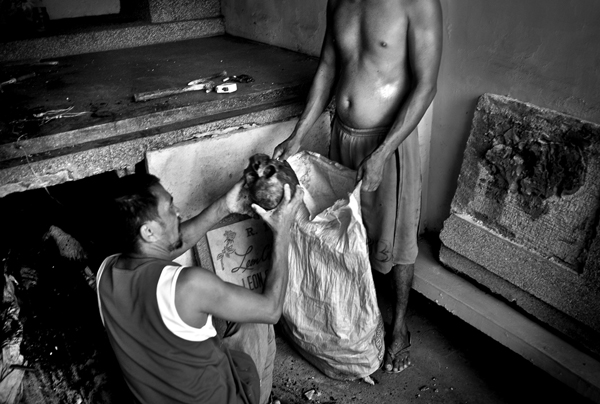
The cemetery provides an income for many of its residents who work as caretakers. This can entail maintaining and cleaning tombs and mausoleums (which the caretaker may inhabit with their family), building tombs, assisting with burials and performing exhumations. Due to the lack of space in the cemetery most bodies are laid to rest in a tomb for five years, after which the decomposed body will be exhumed and placed in a small bones crypt to provide room for the newly dead.
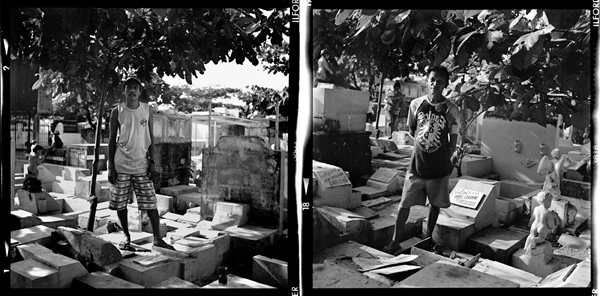
Caretakers, Eric and Romeo, stand amongst the tiny scattered graves that make up the children's cemetery—a small plot within the larger North Cemetery site.
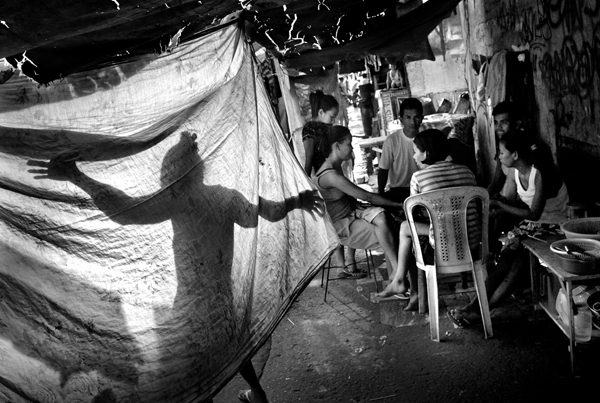
Despite all of the challenges faced by the residents, the community here, which exists without a name, is strong. In fact, the stigma attached to it has allowed a unique 'gated community' to grow, boasting quiet streets and a very social atmosphere, with children and adult residents often meeting in the streets to socialize and play games.
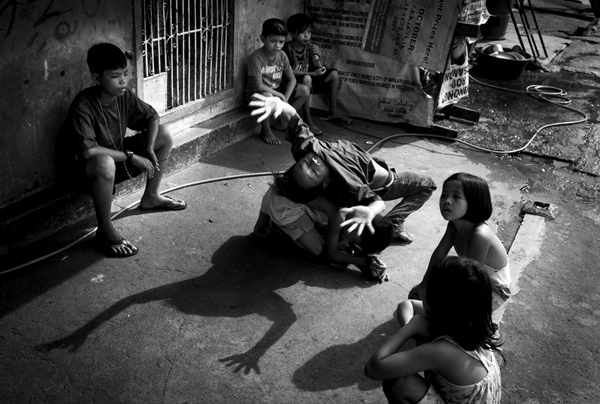
In contrast to the overcrowded, chaotic and traffic-filled streets of Manila, the cemetery avenues and the mausoleums that line them are calm and quiet. Children can play in the street inside. This would be impossible in the chaotic neighborhood immediately outside.
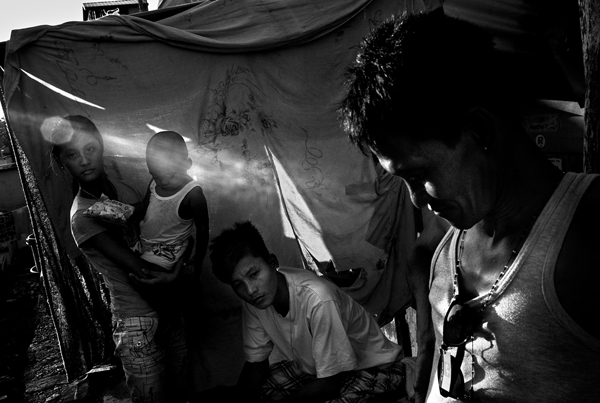
Bobby Jiminez was also born in the cemetery and has spent most of his life there along with his eight siblings. He has raised his own family on the North Wall and recently became a grandfather. Bobby earns his living as a tricycle driver. Most days he will earn around $2-3 in rides. He has recently been able to purchase his own sidecar, but his moped is rented.
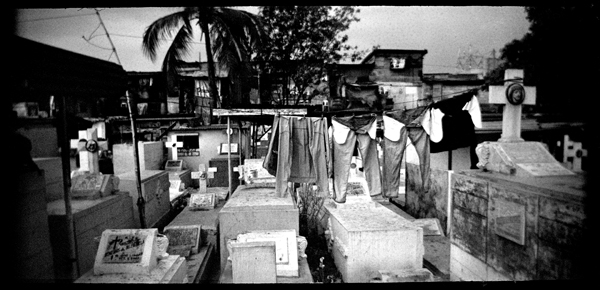
The residents overcome significant challenges daily in order to access utilities in an area which was obviously not built to support permanent, living residents. Drinking water is purchased from stations outside of the cemetery although water for washing is collected from deep wells scattering the whole of the 115 acre site. There is no sewage system, so people rely on bucket toilets, disposing of the waste where they can.
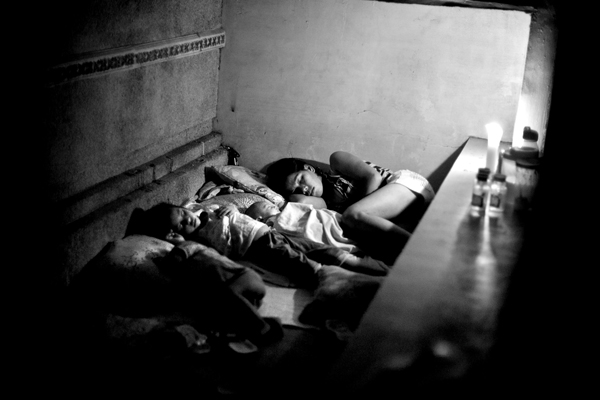
A young mother sleeps with her children in a mausoleum. Although local authorities periodically attempt to expel residents from the cemetery, there are just too many people. Despite the lack of utilities and the surreal environment, the cemetery offers a more comfortable life for many than the overcrowded city of Manila and its slums.
2010 POYi EMERGING VISION PROJECT UPDATE
Living With the Dead: Manila's North CemeteryBy James Chance Manila is the most densely populated city in the world with an average of 43,000 people living per square kilometer. In the center of this heaving metropolis lies the North Cemetery. The final resting place of several Filipino Presidents, celebrities, and hundreds of thousands of the city's Catholic dead, the cemetery is also home to a living community of more than 2,000 people. In a country where around 40 percent of people live below the poverty line, and overpopulation in Manila is reaching desperate proportions, the cemetery provides a unique residence for the hundreds of families that live and work within its walls. The cemetery is a microcosm that purely illustrates how overpopulation affects those at the bottom of the economic spectrum. In this case, unchecked growth and a lack of housing and basic resources, have resulted in a community of people who have made themselves less vulnerable by choosing to turn a taboo locale into a home. In this respect, the North Cemetery is a testament to the ingenuity and resilience of it's living community members, who have not only adapted, but are in many cases succeeding in this unique and 'unsuitable' environment. Chance expects to complete the project in Nov. 2011.
Multimedia |
|
|
Pictures of the Year International is a program of the
Donald W. Reynolds Journalism Institute at the Missouri School of Journalism. |
|


